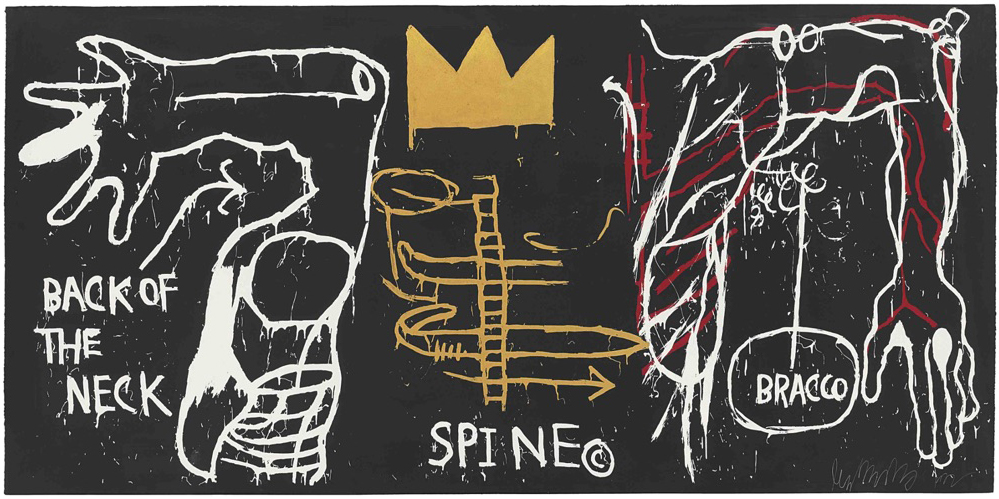This column00% Natural Friend’s Older Sister (2025)part of a series called "Voices of Women in Tech," created in collaboration with AnitaB.org, a global enterprise that supports women in technical fields, as well as the organizations that employ them and the academic institutions training the next generation.
So much time, effort, and expense go into fixing tech’s diversity problem — why have we seen so little progress?
SEE ALSO: Hey, tech CEOs: Fighting racism isn't just right, it's also good businessThe proof of our failure is in the data. The 2017 Top Companies for Women Technologists report, which measured more than 547,000 technologists across 63 organizations, showed a mere 1.2 percent year-over-year increase in the number of women in technical roles. Women’s representation in midlevel, senior, and executive roles saw considerably smaller increases of .2 percent, .6 percent, and 1 percent respectively.
These numbers are likely far higher than the industry at large, since Top Companies participants are already committed to measuring their progress. For women of color, the numbers are even more disheartening. The meager increases in women’s representation have gone almost entirely to white women and women of Asian descent.
All of us have to be brave and admit that what we’ve been doing is simply not working.
For years, tech companies have followed a similar formula to diversify their workforces. They host affinity groups, they hold sensitivity training, they tweak hiring processes. But all of these efforts have yielded scant benefits. If the tech industry continues to “improve” at the current rate, it will take decades before we reach gender parity, and even longer before our workforce accurately reflects the population at large. Clearly, something’s gotta give.
All of us have to be brave and admit that what we’ve been doing is simply not working. We need to face the real data, scrap fruitless initiatives, and take an entirely new approach. This is no time to give in to diversity fatigue!
Why do so many organizations continue to fail? For some, there’s a gap between the desire to look good and the actual effort that progress requires. But even executives with perfect motivations are finding themselves looking at stagnant diversity stats. And I know this is true, because I’m one of them.
I’m the leader of AnitaB.org, the leading organization devoted to the advancement of women in technology. We host the annual Grace Hopper Celebration, the world’s biggest gathering of women technologists. We administer Top Companies for Women Technologists, the only program that provides a consistent benchmark of the technical workforce across a wide range of industries.
We are, by all rights, true experts in fostering diversity. And yet, looking at our own internal diversity numbers, I could see no other answer: We had not only failed to move the needle, by most measures we had actually regressed. How could we continue to pressure the industry around us for greater diversity when we ourselves were not able to improve as we intended?
Clearly, we need a new approach. Here’s what we’re advocating: First, the change has to start at the very top. When our board of trustees sought a new CEO for our organization — someone to continue the incredible work that Anita Borg herself began in 1997 — they took a very rare step. Not only did they interview me, a black woman technologist, they hired me. By doing so, they were making a clear statement: It was time for this organization to take the necessary steps toward fully recognizing the intersectionality of the women we serve, and of our own team doing that work.
As part of a series of changes under my leadership, we have hired our first HR director. She’s implementing significantly stronger HR policies and procedures to foster more inclusivity and equity, and helping us adjust our hiring practices — where we advertise, how we assemble interview panels, and other tactical steps — to help us attract a more diverse candidate pool. We’re also requiring that every hiring manager assemble a truly inclusive group of prospective employees.
When we add to our team, leaders must consider candidates with a variety of intersections, including age, gender, race, and ability. We’re also focused on capturing our racial and ethnic data more accurately, especially for those team members who identify with more than one group, to better measure our progress.
When we add to our team, leaders must consider candidates with a variety of intersections, including age, gender, race, and ability.
Right now, I’m also personally vetting every hire we make to ensure we’ve drawn from a broad pool, and that we are bringing on talent that truly reflects the richness of the communities we serve. This commitment takes time away from my other projects, but we accept this trade-off because it’s important to set the tone from the top, and because we cannot continue to operate as we always have.
We’re also focusing on promoting and retaining a diverse set of talented employees — because, frankly, we’ve lost some good people who we wanted to keep. As we always tell the companies who work with us, fixing the “leaky pipeline” is not enough. We cannot hire our way out of this problem. We must fix our retention and promotion process, not simply in addition to hiring better, but first and foremost.
At our core, we’re technologists: Solving problems is what we do best. We need to focus the same skills that have made technology companies the vanguard of economic growth — disruption and innovation — onto the issues that threaten our industry’s progress.
To win the innovation wars, to fill empty seats, to create products that delight customers, change must start with leadership. Visionary leaders need to make bold moves and acknowledge the depth of the issue. We need to throw out initiatives that haven’t made an impact, look at real data, and build a better way forward. Companies that undertake a new approach are the companies that are going to see change.
SEE ALSO: The long, strange history of the backlash against women in techAnd it has to start with those of us who do the work of diversity, equity, and inclusion on a daily basis.
Already, we’ve seen some progress. Our diversity numbers so far this year look very different than they did at the end of 2017. And, as we set a new baseline and measure ourselves against it, we will be better able to identify places where we’ve improved and those where we’ve regressed, codifying our tactics for future gains. We don’t expect everything to work perfectly — there is no silver bullet — but we do expect to take honest and unflinching measurements of what does move the needle.
Fixing tech’s diversity issues is truly personal for me, and for everyone who works at AnitaB.org. As we offer ourselves as an example, we want the companies we work with to know we’re willing to do the same critical work and, as leaders, hold ourselves personally accountable in the same ways that we’re demanding of them.
Brenda Darden Wilkerson serves as the President and CEO of AnitaB.org, an organization working to shape public opinion about issues of critical importance to women technologists in academia, industry, and government.
Topics Social Good
 Gods of War
Gods of War
 Redux: Elizabeth Bishop, Evan S. Connell, and Diane di Prima by The Paris Review
Redux: Elizabeth Bishop, Evan S. Connell, and Diane di Prima by The Paris Review
 Why TikTok is urging you to ditch anything 'low vibrational'
Why TikTok is urging you to ditch anything 'low vibrational'
 This Girl Is on Fire: Germany’s Creepiest Children’s Poem
This Girl Is on Fire: Germany’s Creepiest Children’s Poem
 Gods of War
Gods of War
 The Surprising History (and Future) of Paperweights
The Surprising History (and Future) of Paperweights
 Drawing Dogs in George Booth's Living Room
Drawing Dogs in George Booth's Living Room
 Cooking with Chinua Achebe
Cooking with Chinua Achebe
 Episode 4: The Wave of the Future
Episode 4: The Wave of the Future
 Borg is the latest example of TikTok making campus life a spectacle
Borg is the latest example of TikTok making campus life a spectacle
 This Girl Is on Fire: Germany’s Creepiest Children’s Poem
This Girl Is on Fire: Germany’s Creepiest Children’s Poem
 Boo: Don't harsh my ghost
Boo: Don't harsh my ghost
 What is a borg? The water jug drink college kids are making viral on TikTok, explained
What is a borg? The water jug drink college kids are making viral on TikTok, explained
 This fat bear's before and after photos are stunning
This fat bear's before and after photos are stunning
 On Basquiat, the Black Body, and a Strange Sensation in My Neck
On Basquiat, the Black Body, and a Strange Sensation in My Neck
 At the Museum of Anatolian Civilizations
At the Museum of Anatolian Civilizations
 Reading Roger Deakins’s Cinematography Blog
Reading Roger Deakins’s Cinematography Blog
 Against Fear
Against Fear
 Boo: Don't harsh my ghost
Boo: Don't harsh my ghost
Apple's Vision Pro might be tricky to get in 2024How to Prepare for the Past by Brian Cullman'The Idol' finale: What happened to that 'Rolling Stone' scene?This Is a Book by Sadie SteinWhere 'The Idol' ranks in fictional pop starsHypothetical Tom Robbins–Inspired Ben & Jerry’s Flavors by Sadie Stein'Quordle' today: See each 'Quordle' answer and hints for July 5'The Idol': Wait, how is Jocelyn is famous again?On the Occasion of Zelda Fitzgerald’s BirthdayKristin Dombek’s “Letter from Williamsburg” by Lorin SteinSenior Poetry by Nathan DeuelWhat We’re Loving: PsychoChamp and Major Biden, our new First Dogs, have moved into the White House'The Idol' finale: The 10 most WTF scenesNetflix's 'Run Rabbit Run' ending, explained: What happened to Alice?'Quordle' today: See each 'Quordle' answer and hints for July 4What We’re Loving: PsychoThe Mysterious Book Sculptor of Edinburgh Strikes Again, and Other News by Sadie Stein'Quordle' today: See each 'Quordle' answer and hints for July 4This Is a Book by Sadie Stein Surveillance cam captures deer jumping through restaurant's window Seasonal Reese's are better than Reese's Peanut Butter Cups 'Us' nabs a $71.1 million opening weekend, one of horror's best ever Hillary Clinton's email nightmare resurfaces with 11 days to go Everything coming to (and going from) Hulu in April 2019 The DeStress Monday campaign is the refresh button your mind needs Election day cyberattack: It's coming, but probably won't matter Nintendo is on to something with its simple and cheap Labo Google's API changes will kill off some IFTTT functionality How to watch Apple's March 25 streaming service announcement YouTube cancels premium original shows ahead of Apple's streaming service event Dad who dressed as Princess Peach for his daughter addresses critics in open letter Watch Idris Elba kickboxing and be thankful you're not fighting him Pick up your used car at Carvana's newest car Europe's first underwater restaurant resembles a shipwrecked monolith Parents receive anonymous letter shaming them for 'tiny' home Next iPhone might be able to wirelessly charge some Apple accessories 'Rogue One' writer reveals the film could have ended with a wedding Jaunt turns old gas cars into electric vehicles for road adventures Miley Cyrus celebrates 'Hannah Montana' anniversary with cute throwback photo
1.8254s , 10155.8671875 kb
Copyright © 2025 Powered by 【100% Natural Friend’s Older Sister (2025)】,Wisdom Convergence Information Network